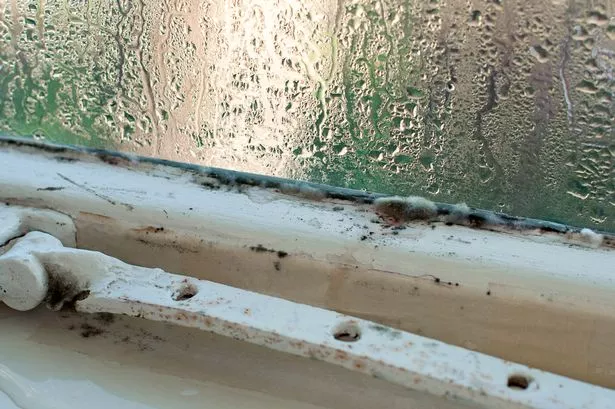Experts have shared the "secret" cleaning hacks to removing mould around your windows this winter.
As the weather turns colder, many people may be experiencing a build up of condensation on their windows. This can be difficult to keep on top of, as many turn to social media for top tips to prevent the problem.
Condensation occurs when there is a build-up of moisture in the air. It is often caused when moisture held in warm air meets a cold surface like a window or wall and condenses into water droplets.
READ MORE: Heather Small returns to Liverpool as she accepts offer from 'city institution'
READ MORE: Brookside legend Dean Sullivan's final TV appearance
The NHS cautions that breathing in or touching mould spores can trigger an allergic reaction, like sneezing, red eyes, a runny nose, and a skin rash. More serious health problems such as asthma attacks and bronchitis can also occur, so it's crucial to keep the issue in check.
Jade Oliver, showroom stylist at Express Bi-Folding Doors has pulled together her top tips to help windows recover from issues caused by bad weather including mould, as well as what to do if they’re hit with steam from cooking the Christmas roast or messy handprints.
The secret sauce for a general clean
Jade said: "As well as using hot soapy water and a squeegee for a squeaky-clean finish, there is also another ingredient to include. The acidity of white vinegar helps remove the waxy layer caused from cleaning products.
"This film is a magnet for streak marks, so adding a splash of white vinegar to your cleaning routine will help remove them. In fact, mix equal parts white vinegar and hot water for the ultimate budget-friendly window cleaning spray."
Getting rid of mould
Jade added: "As much as we might not want to, one of the best ways to avoid mould is to leave our windows open for a few hours potentially whilst you’re out or in a different room can make a huge difference."
She also warns against one of the most common methods of getting rid of mould you might hear about as she said: "Bleach doesn’t work – however white vinegar left for around an hour with a scrubbing brush, or even a cloth soaked in warm, soapy water should do the trick. Remember to always wear gloves and a mask when getting rid of mould."
Removing built up dirt
If you are cleaning your windows for the first time in a while, Jade advises: "For both inside and out, there will be a build-up of dirt on windows all over the home whether it be from bad weather or dust and grime from around the home. It’s tempting to spray each area with hot soapy water immediately however, this will make the dust stick to the glass and you’re simply moving it around rather than removing it."
Before going in with your cleaning supplies she recommends using a duster to loosen any dust particles first, and then try gently vacuuming with the bristle attachment to avoid scratching the surface.
Removing pesky hand marks or paw prints
Jade said: "Although using an unscented and uncoloured glass cleaner is essential, the key ingredient is the cloth. Using an old rag, duster or newspaper will only spread the spots on the glass, whereas a microfibre cloth folded correctly will do the trick.
"Ensure that it’s folded over at least once so no oils from your skin make their way through the material and smear on the glass. The small fibres in a microfibre cloth will absorb whatever they encounter. Ensure there is distance between your hand and the window by folding the cloth, and scrub from left to right. Rubbing in circles will create a static that dust can stick to."
Common mistakes when cleaning windows
- Using the wrong type of cloths: many people may opt for paper towels which could leave a waxy coating on the windows, whilst others may use a dishcloth or sponge which will leave marks. Microfibre clothes are always the best option when cleaning windows and other glass.
- Cleaning their windows on a sunny day: whilst nice and dry weather may make it easier to clean your windows. If the sun is out and facing the window, it could dry it too quickly, leaving streak marks.
- Jumping into cleaning too quickly: people will jump straight into cleaning their windows with a spray or solution, however, even if you clean your windows regularly it’s important to dust your windows first, it builds up quicker than you think!
- Using the wrong solution: regular cleaning sprays, such as anti-bacterial cleaners will likely still leave marks on your windows, using either water and soap, vinegar or a specialised window cleaner will give you much better results.
- Not using a squeegee: using a microfibre cloth can provide excellent results, but using a squeegee will not only make the job easier, but also allows you to really get into the corner of the windows.
Receive newsletters with the biggest and breaking TV and showbiz news by signing up here

